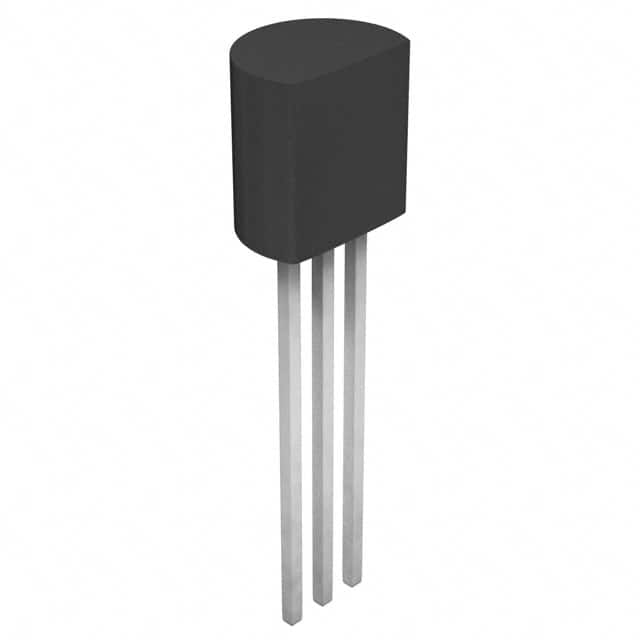Подробную информацию о продукте см. в характеристиках.

2SK2962,F(J) - Product Overview
Category
The 2SK2962,F(J) belongs to the category of field-effect transistors (FETs).
Use
This transistor is commonly used for amplification and switching applications in electronic circuits.
Characteristics
- High input impedance
- Low output impedance
- Voltage-controlled operation
- Low power consumption
Package
The 2SK2962,F(J) is typically available in a TO-220 package, which provides efficient heat dissipation and easy mounting on circuit boards.
Essence
The essence of this product lies in its ability to amplify and control electrical signals with high efficiency and reliability.
Packaging/Quantity
The 2SK2962,F(J) is usually packaged in reels or tubes, with quantities varying based on manufacturer specifications.
Specifications
- Drain-Source Voltage (VDS): 60V
- Continuous Drain Current (ID): 5A
- Total Power Dissipation (PD): 30W
- Gate-Source Voltage (VGS): ±20V
- Input Capacitance (Ciss): 800pF
- Output Capacitance (Coss): 200pF
- Reverse Transfer Capacitance (Crss): 150pF
Detailed Pin Configuration
The 2SK2962,F(J) features a standard three-pin configuration: 1. Gate (G): Input terminal for controlling the conductivity of the transistor. 2. Drain (D): Output terminal where the amplified or switched signal is obtained. 3. Source (S): Common terminal connected to the ground reference.
Functional Features
- High input impedance allows for minimal loading of preceding circuitry.
- Low output impedance ensures effective signal transmission to subsequent stages.
- Fast switching speed enables rapid response in switching applications.
Advantages and Disadvantages
Advantages
- Efficient signal amplification and switching capabilities.
- Low power consumption.
- Reliable performance in various electronic circuits.
Disadvantages
- Susceptible to damage from static electricity if mishandled.
- Sensitivity to overvoltage conditions.
Working Principles
The 2SK2962,F(J) operates based on the principle of field-effect modulation, where the voltage applied to the gate terminal controls the flow of current between the drain and source terminals.
Detailed Application Field Plans
Audio Amplification
Utilized in audio amplifier circuits to boost the strength of audio signals with minimal distortion.
Switching Circuits
Integrated into electronic switches to control the flow of current in various applications, such as motor control and power supplies.
Detailed and Complete Alternative Models
- IRF540N
- FQP30N06L
- STP55NF06L
These alternative models offer similar characteristics and can be used as substitutes for the 2SK2962,F(J) in various applications.
This comprehensive entry provides an in-depth understanding of the 2SK2962,F(J), covering its specifications, functional features, application fields, and alternative models, making it a valuable resource for engineers and enthusiasts in the electronics industry.
Перечислите 10 распространенных вопросов и ответов, связанных с применением 2SK2962,F(J в технических решениях.
What is the 2SK2962,F(J transistor used for?
- The 2SK2962,F(J transistor is commonly used for amplification and switching applications in electronic circuits.
What are the key specifications of the 2SK2962,F(J transistor?
- The 2SK2962,F(J transistor typically has a maximum drain-source voltage of 60V, a continuous drain current of 5A, and a low on-resistance.
How do I determine the pin configuration of the 2SK2962,F(J transistor?
- The pin configuration of the 2SK2962,F(J transistor can be found in its datasheet, which typically shows the pinout and orientation of the transistor.
What are some common circuit configurations using the 2SK2962,F(J transistor?
- The 2SK2962,F(J transistor is often used in common source amplifier configurations and as a switch in electronic circuits.
How do I calculate the power dissipation for the 2SK2962,F(J transistor in a given circuit?
- The power dissipation can be calculated using the formula P = I^2 * R, where I is the current flowing through the transistor and R is the on-resistance.
What are the typical operating conditions for the 2SK2962,F(J transistor?
- The 2SK2962,F(J transistor is typically operated within a specified temperature range and under certain voltage and current conditions as outlined in its datasheet.
Can the 2SK2962,F(J transistor be used in high-frequency applications?
- While the 2SK2962,F(J transistor can be used in some high-frequency applications, it is more commonly utilized in low to moderate frequency circuits due to its characteristics.
What are the recommended storage conditions for the 2SK2962,F(J transistor?
- The 2SK2962,F(J transistor should be stored in a cool, dry place, protected from static discharge and moisture, and kept in its original packaging until use.
Are there any common failure modes or issues associated with the 2SK2962,F(J transistor?
- Common failure modes may include overvoltage, overcurrent, and thermal stress, so it's important to operate the transistor within its specified limits.
Where can I find additional application notes and reference designs for the 2SK2962,F(J transistor?
- Additional application notes and reference designs can often be found in the manufacturer's datasheet, application guides, or technical support resources.

